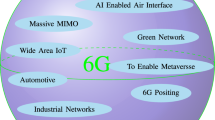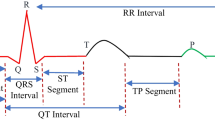Abstract
Wireless communications provide many advantages for industrial applications; however, some problems regarding the reliability of the link must be dealt (e.g. wideband interferers or multipath fading). Cognitive Radio and Dynamic Spectrum Access are two of the technologies that enable the implementation of reliable communications. In order to ensure the reliability of the communication link, it is necessary to carry out a complete change of the transmission band, and not only small in-band changes. Therefore it has to be ensured that the new chosen band is uncorrelated with respect to the previous one, in terms of coherence bandwidth and RF interference. When performing a change in the transmission band the update of some parameters in the digital domain of the cognitive-radio is not enough, but it also requires the adjustment of the analog part, where the antenna element plays an important role. On this basis, this paper presents the integration of a frequency reconfigurable antenna and a Dynamic Spectrum Access algorithm in an FPGA-based cognitive-radio platform for reliable communications. The reconfigurable antenna and the DSA algorithm, together with a commercial adjustable RF front-end, make the system capable of performing both in-band and dual-band channel change in the Industrial, Scientific and Medical (ISM) bands of 868 MHz and 2.45 GHz.











Similar content being viewed by others
References
Raut, R.D. and Kulat, K.D., “SDR Design for Cognitive Radio”. 4th International Conference on Modeling, Simulation and Applied Optimization (ICMSAO), 2011
The Software Defined Radio Forum Inc. “Quantifying the Benefits of Cognitive Radio” Version V1.0.0, 2 December 2010.
Torrego, R., Val, I., & Muxika, E. (2011). OQPSK cognitive modulator fully FPGA-implemented via dynamic partial reconfiguration and rapid prototyping tools” (pp. 142–147). Brussels (Belgium): Proc. Wireless Innovation Forum European Conference on Communications Technologies and Software Defined Radio (SDR’11 – WInnComm – Europe).
Torrego, R., Val, I. and Muxika, E., “Small-form-factor cognitive radio, implemented via FPGA partial reconfiguration, replacing a wired video transmission system”. Proc. Wireless Innovation Forum European Conference on Communications Technologies and Software Defined Radio (SDR’12 – WInnComm), Washington, 2012.
Azim, R., Islam, M. T., & Misran, N. (2011). Compact tapered-shape slot antenna for UWB applications. IEEE Antennas Wirel Propag Lett, 10, 1190–1193.
Nashaat, D. M., Elsadek, H. A., & Ghali, H. (2005). “Single feed compact quad-band PIFA antenna for wireless communication applications,”. IEEE Trans Antennas Propag, 53, 2631–2635.
Jong-Hyuk, L., Zhe-Jun, J., Chang-Wook, S., & Tae-Yeoul, Y. (2012). Simultaneous frequency and isolation reconfigurable MIMO PIFA using PIN Diodes. IEEE Trans Antennas Propag, 60, 5939–5946.
XILINX: ‘UG702 - Partial Reconfiguration User Guide’, 2011, 13.3 edn., pp. 130.
Mohamad, M.H., Wen, H.C. and Ismail, M., “Matched filter detection technique for GSM band,” 2012 International Symposium on Telecommunication Technologies, ISTT, 2012: p. 271–274
Shobana, S., Saravanan, R., & Muthaiah, R. (2013). Matched filter based spectrum sensing on cognitive radio for OFDM WLANs. Int J Eng Technol, 5(1), 142–146.
Datta, R., Panaitopol. D and Fettweis, G., “Analysis of cyclostationary GFDM signal properties in flexible cognitive radio,” 2012 International Symposium on Communications and Information Technologies, ISCIT 2012, 2012: p. 663–667.
Zahedi-Ghasabeh, A., Tarighat, A., & Daneshrad, B. (2012). Spectrum sensing of OFDM waveforms using embedded pilots in the presence of impairments. IEEE Transactions on Vehicular Technology, 61(3), 1208–1221.
Panaitopol, D., et al., “Fast and reliable sensing using a background process for noise estimation,” Proceedings of the 2011 6th International ICST Conference on Cognitive Radio Oriented Wireless Networks and Communications, CROWNCOM, 2011: p. 221–225.
Turunen, V., Kosunen, M., Kallioinen, S., Pärssinen, A. and Ryynänen, J., “Spectrum sensor hardware implementation based on cyclostationary feature detector,” Majlesi Journal of Electrical Engineering, 2011, 5(1).
XILINX: ‘UG640 - System Generator for DSP User Guide’, 2012, 14.3 edn., pp. 1–424.
Nutaq Radio420S Multimode SDR FMC RF transceiver product sheet, 2012.
Casado, F., Arriola, A., Arruti, E., Parron, J., Ortego, I. and Sancho, J.I., “2.45 GHz printed IFA on metallic environments: Clearance distance and retuning considerations,” in 6th European Conference on Antennas and Propagation (EUCAP), 2012, pp. 921–924.
Casado, F., Arriola, A., Parron, J., Arruti, E., Ortego, I. and Sancho, J.I., “Reconfigurable Matching Network for 2.45 GHz printed IFA on metallic environments” Loughborough Antennas and Propagation Conference (LAPC), 2012.
Author information
Authors and Affiliations
Corresponding author
Rights and permissions
About this article
Cite this article
Casado, F., Torrego, R., Rodríguez, P. et al. Reconfigurable Antenna and Dynamic Spectrum Access Algorithm: Integration in a Cognitive Radio Platform for Reliable Communications. J Sign Process Syst 78, 267–274 (2015). https://doi.org/10.1007/s11265-014-0893-0
Received:
Revised:
Accepted:
Published:
Issue Date:
DOI: https://doi.org/10.1007/s11265-014-0893-0




